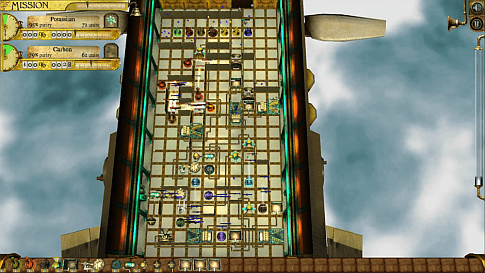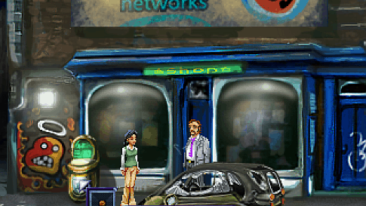Developer Summary:
Sky Alchemist is a beautiful steampunk strategic puzzle game set in the World of Sky. It was inspired by tower defence games, but is quite a departure from the usual tower defence game. Many “TD evolved” games have tried to evolve it by adding a FPS component, or by turning it into a clickfest. Sky Alchemist has evolved the genre by increasing the strategic depth and the complexity of what you can build. The game offers:
- A persistent inventory system that lets you retain your progress from level to level
- No penalty for removing tools from play – rebuild at your leisure
- Thousands and thousands of possible missions, each featuring different combinations of 58 “enemies”
What We Think:
Oh, Sky Alchemist. Lurking somewhere underneath the terrible controls and unintuitive design is a fun, charming blend of steampunk and Rube Goldberg-esque puzzles that very nearly make the game worthwhile. If I had an iPad, for which this game must surely have been intended, this would be a much different review. Unfortunately for Sky Alchemist and myself, I played the game on PC.
What’s good about this game? Well, for one, the art. There’s a steampunk theme that runs throughout, and the game uses a cartoonish style of art that adds some character to what could have been a fairly clinical environment. It’s colorful without being garish, and avoids the cutesy, “My Little Pony” look that plagues some games. Although it’s not immediately obvious which devices do what (we’ll get to that later) the tools that you interact with are distinctive. Also, the theme is admirably consistent; scroll through an info sidebar and you’ll see gears winding the page along, for instance. Old-timey meters and gauges abound.

The premise, while a bit thin, sets the game up nicely. You’re flying through the sky in a zeppelin, and you need to harvest raw materials from the atmosphere. By assembling a combination of various single-purpose devices and using walls to create pathways, you manipulate raw material from the clouds outside into the desired chemicals inside the ship. The game’s description compares the gameplay to the tower-defense genre, which, though not quite accurate, is close enough.
It’s a puzzle game very much like other, similar games which ultimately seem to simulate assembly-line design (Space Chem anyone?). Like the better games of the genre, it forces you to think creatively without applying frustrating pressure. The feeling of accomplishment you get when you plan out a design, place the parts, and watch it work correctly is very, very rewarding.
Unfortunately, the feeling of frustration you get when you have to wrestle with the controls is enough to turn you off well before you get the chance to see your plan in action. The UI aims for a degree of minimalism, presumably for immersion, but it fails to include some very basic features. For instance, in fullscreen, there is no way to exit the game. You read that correctly. The main screen lets you begin the game or continue a game in progress (of which you may only have one) while an icon in the corner lets you view the game’s lengthy credits, but if you want to quit, you’ve got to Alt-Tab out of the game and close it from the Taskbar.

Once you’re in the game itself, the worst of the control issues make the game tedious at best. Devices are initially placed by simply dragging them into position, as you would expect. But once on the board, you must click, release, then pull the device where you want it. Want to turn the device around? Click, release, click on or near an icon to the side, and rotate. Alone, it isn’t a game-breaker, but it’s an inexplicable design decision. Why change commands unnecessarily?

There are no mouse-over tooltips. Right-clicking accomplishes nothing. Where there are menus, it isn’t obvious how to open or close them. You figure it out eventually, of course, but that shouldn’t be part of the game; navigating the UI shouldn’t be a challenge. Information panels about chemicals and devices give a lot of “color” info, such as the fictional manufacturers of the device, and real-world information, such as the boiling point of liquid propane. That’s all well and good, but it would be nice to see that attention to detail elsewhere in the game, such as in making it obvious why a device has stopped working, or even something as basic as showing what part of a machine (if any) lets substances pass through and what part (if any) blocks passage.
Sky Alchemist presents a bit of a conundrum. It’s a very interesting idea that’s spoiled by poor execution. I can’t really recommend it because it’s such a frustrating experience. On the other hand, the idea behind the game is great, and, if you can stomach the awkward controls and annoying design, there’s probably a lot of fun to be had. Sky Alchemist’s problem is that it can’t get out of its own way long enough to be the kind of game it’s trying to be. Is it irredeemably flawed? No, but, as a game, it’s too trying an experience to recommend to anyone. Fortunately, it appears that the developers are aware of the problems and intend to fix them. If they follow through, Sky Alchemist will be a solid buy. Until then, it’s best to wait on this title.
Sky Alchemist at eye3ware’s Official Site
Sky Alchemist on Desura
[xrr rating=”2/5″]




